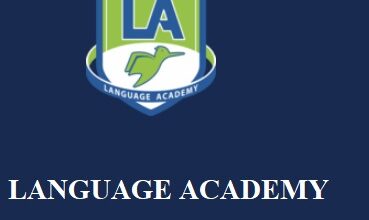
Best Middle Schools
Best Middle Schools
Choosing the right middle schools for your children is a decision that can greatly impact their educational journey and personal development. With numerous options available, it’s crucial to navigate through the choices and find the best middle school that aligns with your child’s needs and aspirations. In this article, we will explore the key factors to consider when evaluating middle schools and delve into what makes some institutions stand out as the best. So, let’s embark on this quest to discover the ideal educational environment for your child!
Factors to Consider When Evaluating Middle Schools
Academic Programs and Curriculum:
To foster academic growth and ignite a passion for learning, middle schools with diverse academic programs and a well-rounded curriculum are highly recommended.
- Differentiated Instruction:
In the realm of education, one size doesn’t fit all. Differentiated instruction is an approach that recognizes the unique learning styles and needs of individual students. It involves tailoring teaching methods and content to suit their specific requirements. By incorporating various instructional strategies, such as visual aids, hands-on activities, and cooperative learning, middle schools can create an inclusive environment where every student can thrive.
- Advanced Placement Courses:
For academically inclined students seeking an extra challenge, middle schools that offer Advanced Placement (AP) courses can provide a stimulating and rigorous academic experience. AP courses are college-level classes offered in a high school setting. By enrolling in these courses, students can delve deeper into subjects of interest and earn college credits while still in middle school. This early exposure to advanced coursework can better prepare them for future academic pursuits.
- Enrichment Programs:
Beyond the core curriculum, middle schools that offer a range of enrichment programs provide students with opportunities to explore their interests and talents outside the traditional classroom setting. These programs may include clubs, competitions, and special projects in areas such as art, music, drama, debate, and more. By participating in these activities, students can develop their creativity, critical thinking skills, and teamwork abilities, fostering a well-rounded educational experience.
Extracurricular Activities and Clubs:
A well-rounded education goes beyond academics, and middle schools that provide a wide array of extracurricular activities and clubs can enrich students’ social and personal growth.
- Sports Teams:
Participating in sports teams not only promotes physical fitness but also teaches essential life skills such as teamwork, discipline, and perseverance. Middle schools with a variety of sports teams allow students to explore different athletic pursuits, ranging from traditional team sports like basketball, soccer, and volleyball to individual sports like track and field, swimming, and tennis. Engaging in sports can also foster a sense of camaraderie and school spirit.
- Fine Arts Programs:
Middle schools that offer robust fine arts programs empower students to explore their creative side and express themselves through various artistic mediums. Whether it’s participating in a choir, band, orchestra, or theater production, these programs provide a platform for students to develop their artistic skills, boost self-confidence, and nurture their passion for the arts. By collaborating with peers and showcasing their talents through performances and exhibitions, students gain valuable experiences that enhance their overall growth.
- STEM Clubs:
In today’s technology-driven world, middle schools that provide STEM (Science, Technology, Engineering, and Mathematics) clubs offer students opportunities to engage with hands-on projects, scientific experiments, and problem-solving challenges. STEM clubs foster critical thinking, creativity, and innovation. Students can explore areas such as robotics, coding, engineering, and environmental science, developing skills that are increasingly relevant in the modern workforce. By nurturing an interest in STEM fields, these clubs can inspire students to pursue careers in science and technology.
School Size and Class Sizes:
The size of a middle school and its class sizes can significantly impact the learning environment and individualized attention students receive.
- Benefits of Smaller Class Sizes:
In smaller class settings, students often experience increased interaction with teachers, leading to more personalized attention and support. With fewer students to cater to, teachers can better understand each student’s strengths, weaknesses, and learning styles. This enables them to tailor their teaching approaches and provide targeted feedback, fostering academic growth and confidence. Additionally, smaller class sizes promote a sense of community and belonging, as students develop closer relationships with both their peers and teachers.
- Opportunities for Individualized Attention:
Middle schools that prioritize individualized attention can provide tailored support for student’s academic and emotional well-being. By closely monitoring students’ progress and identifying their specific needs, teachers can create customized learning plans. This approach helps address individual strengths and weaknesses, allowing students to reach their full potential. Establishing strong teacher-student relationships also facilitates effective communication and a supportive learning environment.
- Considerations for Larger Schools:
While smaller schools offer certain advantages, larger middle schools can provide students with a broader range of extracurricular offerings and expanded resources. These schools often have diverse student populations, exposing students to a variety of perspectives and cultures. Larger schools may also have more extensive facilities, such as state-of-the-art science labs, spacious athletic fields, and well-equipped art studios. However, it is essential to assess how larger schools maintain a sense of community and ensure that individual students receive the necessary support and attention.
School Culture and Community
Creating a welcoming and inclusive environment is vital for the holistic development of students. The school’s culture and community significantly influence their educational experience.
Welcoming and Inclusive Environment:
A positive and inclusive school environment lays the foundation for students to thrive academically, socially, and emotionally.
- Diversity and Multiculturalism:
Middle schools that embrace diversity and multiculturalism create a rich and inclusive atmosphere. By celebrating differences in ethnicity, culture, and background, these schools foster an environment that promotes understanding, respect, and empathy. Encouraging multicultural education and incorporating global perspectives in the curriculum equips students with the tools to navigate an increasingly interconnected world.
- Anti-Bullying Initiatives:
Promoting a safe and supportive school environment requires proactive measures against bullying. Middle schools should implement comprehensive anti-bullying policies and programs that emphasize prevention, intervention, and support for victims. By raising awareness about the impact of bullying and nurturing a culture of kindness and empathy, schools can create a space where all students feel safe and valued.
- Supportive Staff and Faculty:
The dedication and support of the school’s staff and faculty play a pivotal role in students’ educational journey. Caring and empathetic teachers and administrators create an atmosphere where students feel comfortable seeking guidance and support. Recognizing and nurturing individual talents and interests, they inspire students to explore their passions and reach their full potential. By providing mentorship and emotional support, these educators contribute significantly to students’ personal and academic growth.
Parent and Community Involvement:
A strong partnership between parents, the school, and the community enhances the educational experience and strengthens the support network for students.
- Active PTA or PTO:
Parent-Teacher Associations or Organizations provide avenues for parents to actively engage with the school community. These organizations often collaborate with teachers and administrators in decision-making processes, fundraising initiatives, and organizing school events. Active participation in the PTA or PTO allows parents to contribute to their child’s educational journey and stay informed about school activities.
- Volunteer Opportunities:
Middle schools that offer volunteer opportunities for parents and community members foster a sense of shared responsibility in shaping students’ educational experiences. Parents and community members can participate as guest speakers, facilitate career fairs, or offer mentoring programs. By bringing real-world experiences and expertise into the school, volunteers contribute to a well-rounded education and provide valuable insights and inspiration to students.
- Collaboration with Local Organizations:
Establishing partnerships with local organizations and businesses can enrich students’ educational experiences beyond the classroom. Collaborations may involve guest lectures, internships, or field trips that offer real-world connections and application of knowledge. By leveraging the resources and expertise of the community, middle schools can enhance their curriculum and provide students with diverse learning opportunities.
Read Also:
Montessori Certification: Unlocking the Path to Educational Excellence
Learning Activities for Kindergarteners: Unleash the Joy of Learning
Bachelor’s Degree: How Many Years?
Resources and Facilities
The availability of resources and quality facilities significantly impact the learning experience and overall development of students.
Technology Integration:
In today’s digital age, middle schools that integrate technology effectively empower students with essential skills for the future.
- Availability of Computers and Devices:
Access to up-to-date computers, laptops, and other digital devices is essential for students to engage in research, collaborative projects, and online learning. Middle schools that prioritize providing students with these resources ensure that they are well-equipped to navigate the digital landscape and develop proficiency in using technology for educational purposes.
- Integration of Educational Software and Tools:
Effective integration of educational software and tools can enhance learning experiences and engage students in interactive and immersive activities. From educational apps and online learning platforms to digital resources and simulations, these tools provide avenues for students to explore concepts, conduct experiments, and solve problems in dynamic ways.
- STEM Labs and Maker Spaces:
To foster creativity, innovation, and hands-on learning, middle schools equipped with STEM labs and maker spaces offer students opportunities to engage in practical experimentation and project-based exploration. These dedicated spaces provide access to scientific equipment, engineering tools, and materials for constructing prototypes. Through designing, building, and testing their ideas, students develop critical thinking, problem-solving, and teamwork skills.
Library and Media Center:
A well-resourced library and media center serve as invaluable assets for student learning and research.
- Extensive Book Collection:
A diverse and extensive collection of books catering to various genres, subjects, and reading levels enriches students’ reading experiences and broadens their knowledge. Middle schools that invest in maintaining a well-stocked library ensure that students have access to a wide range of literature, encouraging reading for pleasure and academic exploration.
- Access to Online Resources:
In addition to physical books, providing access to online databases, e-books, and digital resources is essential for supporting research and independent study. Middle schools with subscriptions to reputable online platforms and databases equip students with the tools to conduct thorough research, critically evaluate sources, and acquire information literacy skills.
- Research and Study Areas:
Designated research and study areas within the library and media center foster a conducive environment for individual and collaborative work. These spaces allow students to engage in focused study, group projects, and presentations. Equipped with multimedia resources and technology, such areas enable students to explore and present information in innovative ways, enhancing their communication and presentation skills.
Athletics Facilities and Equipment:
Physical fitness and sports play a vital role in a student’s overall development, and well-equipped athletics facilities support their participation and growth in athletic pursuits.
- Gymnasiums and Fields:
Middle schools with spacious gymnasiums and outdoor fields provide students with appropriate spaces to engage in physical education classes, team practices, and sporting events. These facilities should be well-maintained, safe, and able to accommodate various sports activities.
- Quality Sports Equipment:
Access to high-quality sports equipment and gear is crucial for students’ safety and optimal participation in physical activities. Middle schools that invest in providing well-maintained and up-to-date sports equipment ensure that students can learn and compete with the necessary resources.
- Fitness and Wellness Programs:
Promoting physical fitness and wellness among students goes beyond organized sports. Middle schools that offer comprehensive fitness and wellness programs help students develop healthy habits, learn about nutrition, and gain a deeper understanding of their overall well-being. These programs may include fitness classes, mindfulness exercises, and educational initiatives that foster a lifelong commitment to wellness.






